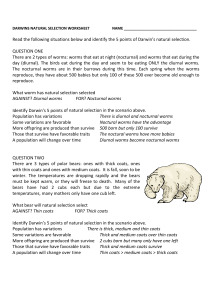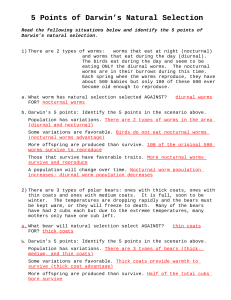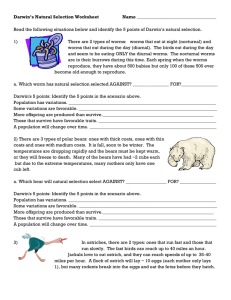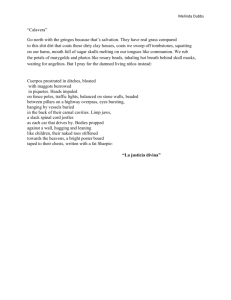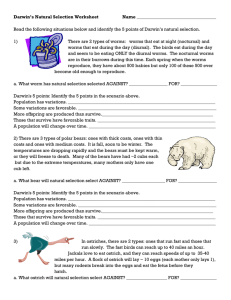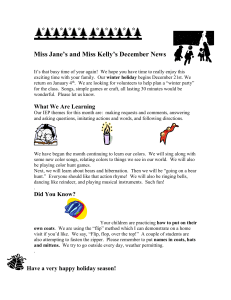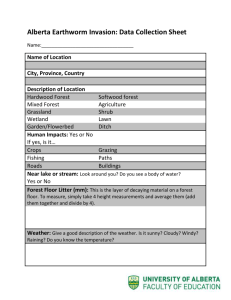Darwin's Natural Selection Worksheet
advertisement
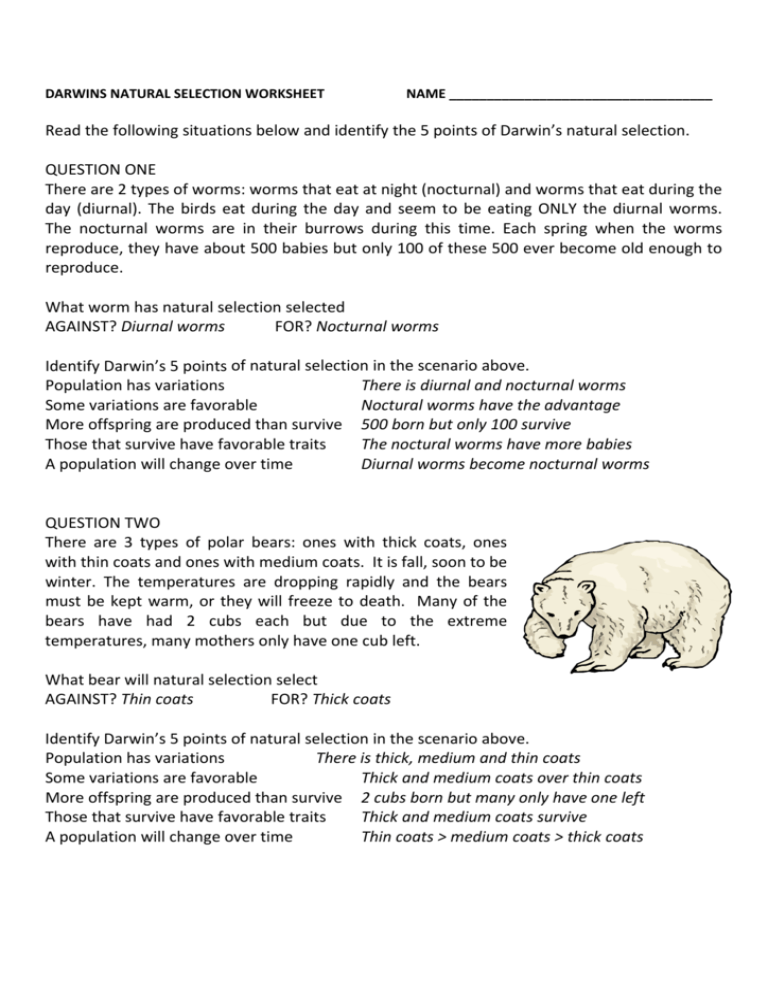
DARWINS NATURAL SELECTION WORKSHEET NAME ___________________________________ Read the following situations below and identify the 5 points of Darwin’s natural selection. QUESTION ONE There are 2 types of worms: worms that eat at night (nocturnal) and worms that eat during the day (diurnal). The birds eat during the day and seem to be eating ONLY the diurnal worms. The nocturnal worms are in their burrows during this time. Each spring when the worms reproduce, they have about 500 babies but only 100 of these 500 ever become old enough to reproduce. What worm has natural selection selected AGAINST? Diurnal worms FOR? Nocturnal worms Identify Darwin’s 5 points of natural selection in the scenario above. Population has variations There is diurnal and nocturnal worms Some variations are favorable Noctural worms have the advantage More offspring are produced than survive 500 born but only 100 survive Those that survive have favorable traits The noctural worms have more babies Diurnal worms become nocturnal worms A population will change over time QUESTION TWO There are 3 types of polar bears: ones with thick coats, ones with thin coats and ones with medium coats. It is fall, soon to be winter. The temperatures are dropping rapidly and the bears must be kept warm, or they will freeze to death. Many of the bears have had 2 cubs each but due to the extreme temperatures, many mothers only have one cub left. What bear will natural selection select AGAINST? Thin coats FOR? Thick coats Identify Darwin’s 5 points of natural selection in the scenario above. Population has variations There is thick, medium and thin coats Some variations are favorable Thick and medium coats over thin coats More offspring are produced than survive 2 cubs born but many only have one left Those that survive have favorable traits Thick and medium coats survive Thin coats > medium coats > thick coats A population will change over time QUESTION THREE In ostriches, there are 2 types: ones that run fast and those that run slowly. The fast birds can reach up to 40 miles an hour. Jackals love to eat ostrich, and they can reach speeds of up to 35‐40 miles per hour. A flock of ostrich will lay approximately 10 eggs (each mother only lays 1), but many rodents break into the eggs and eat the fetus before they hatch. What ostrich will natural selection select AGAINST? Slow ostriches FOR? Fast ostriches Identify Darwin’s 5 points of natural selection in the scenario above. There are slow and fast ostriches Population has variations Some variations are favorable Fast ostriches can out run the jackals More offspring are produced than survive Rodents eat the eggs before they hatch Those that survive have favorable traits The fast ostriches can outrun the jackals A population will change over time Slow ostriches into fast ostriches QUESTION FOUR Bob believes that giraffes have long necks because they have stretched their necks to try and reach food that is high in trees. Since the parent had stretched its neck, it passed the long neck on to its offspring. Ryan believes that giraffes have long necks because the ones with long necks were able to reach the food, and those with short necks could not and died. The long necked giraffes reproduced, and soon all of the giraffes had long necks. Who thinks like Lamarck? Bob Who thinks like Darwin? Ryan
